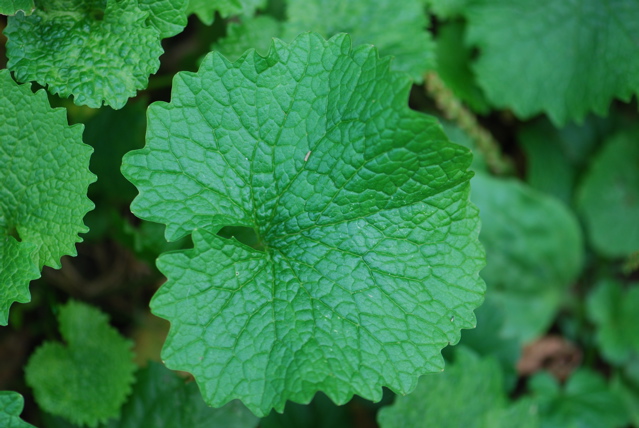Our mystery seeds last week were indeed from garlic mustard, Alliaria petiolata.
Garlic mustard is a biennial. The first year it is low-growing with rounded leaves, forming what is called the rosette stage.
 (Illustration from Wikimedia)
(Illustration from Wikimedia)
The second year it shoots up. The leaves are often more pointed in shape.
(Photograph from Wikimedia)
The two-year-old plant produces clusters of white flowers and then the long seed pods.
Garlic mustard is a classic example of a plant that has “gone wild” when introduced to a new place. Originally from the Old World, people brought the seeds of garlic mustard to North America. Without all of its natural enemies, garlic mustard spread and took over from native plants. In the last few decades it has erupted and is now considered to be an invasive weed in many areas (see for example, Washington state).
On the other side of the coin, it is also considered to be edible. The Brooklyn Botanic Garden has an essay about eating garlic mustard and a recipe.
Personally, I think eating weedy species can be a bit of a lottery. Many of these plants are well-defended chemically. The amount of defensive chemicals can vary from plant to plant and place to place, and how we react to the chemicals can vary from person to person. That’s not to say I’ve never eaten wild plants, but I would suggest informed caution.
What do you think? Have you ever tried garlic mustard?




How funny, this stuff grows literally everywhere in my yard and I didn’t recognise it!
I am always amazed when I go look for a new Seed of the Week what has been sitting right under my nose plantwise.